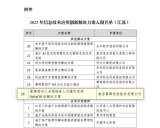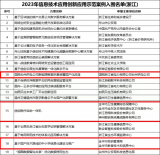Foreword:
This is a summary report by Zhiyuan Yang, a recent high school graduate and a soon-to-be freshman of University of Illinois at Urbana-Champaign class of 2021, electrical engineering major. The internship offers me an opportunity to learn more about programing, computer structures, and some hardware aspects of the boards Emtronix produces.
What I have done:
During the seven weeks,
I “assembled” a mini-computer Intel NUC5i7RYH. The word “assemble” here means putting RAM and an SSD hard-drive in the computer rather than building a computer from scratch. I also installed ubuntu on NUC, for two reasons. First ubuntu is free and fast. Second, it is an Linux operating system which provides a better C-language environment.
I self-studied a book called C Primer Plus in which I learned the fundamentals of the language C. Although I have not completed the whole book of 17 chapters, the first 13 chapters give me enough information to write a simple sorting program for the firm.
Usually around 5pm, I help out wrapping up products and preparing them to be picked up by SF express delivery. This working experience makes me realize how meticulous Emtronix is when it comes to the quality of the products. I recalled there was one time the screens sent out have minor display issues, but totally workable. However, Dr. Cheng still recalled all the products sent out, have them fixed to the perfect conditions, and then resent them to the customers. I also remembered that Dr. Cheng has a policy that once payment is received, products must be delivered out on that very day. After the delivery of products, Emtronix offers top-notch post-sale services and technical support. Engineers tend to the customers’ problems and questions with patience. If there are product problems, engineers would conduct experiments day and night, and work overtime willingly to solve them. Emtronix has shown me that in order to survive in a competitive market, excellent product quality is not enough; a company also needs to establish its reputation. Emtronix has already established itself as an enterprise of integrity, responsibility, and hospitality to customers. If one day I ever start my own firm, I shall also make it a reputable one as well.
Details on what I learned:
Software:
As a man with little knowledge on computer and programing, I begin my internship. The first obstacle I faced is that my computer won’t start up. I checked all kinds of sources on NUC, looked through E-guide, but failed to find the solution. I asked Canglong for help. He checked my device and had suspicions on RAM. We opened the computer and checked the RAM and it turned out the RAM was not completely plugged in. Later I knew that RAM actually stores all the data needed for the system to boot. Then I followed a link online on how to create a boot driver for ubuntu, and successfully installed ubuntu on NUC. Then I need an editor. Gedit came with the ubuntu system; it is very simple to use, like the txt documents on windows. Canglong advised me to use VIM, which is an editor that is harder to use, but once fluently used, it can be very efficient. He told me that Guangze was actually the master of Linux system and VIM in Emtronix. So I went to Guangze for guides and he later gave me some websites on Linux systems and how to use their command lines. What I found most useful is the vimtutor document in the VIM software. It introduces several key shortcuts like “R” to replace until ESC is entered or “r” to replace only one word. “v” to highlight and “dw” to delete word and “dd” to delete a whole line. VIM can also be customized. For example, at first my “tab” key will return me 8 blank spaces, which are too much, so I can change it to 4 blank spaces to look normal. Since I had all the software in place, I began to learn and practice C on my NUC.
C language learning:
The steps to learn C is pretty routine; I simply “learn and practice”. There are all kinds of syntaxes and rules of C that can be gradually understood, but to truly memorize them, one needs to apply them in real codes to be complied or what one will easily forget what he learned. Therefore, learning programing takes lots of time. I first start with different data types, like char, int, double, which are different data units the computer use to store data. I also learned operators which operate on data. Following operators, conditions and looping allow me branch my program more based on users’ input. Then I learned functions and how to call them. Then comes the arrays and file operations, pointers and data structure. And all of the knowledge I learned was used in the sorting program I wrote. I choose bubble sort, an easy way to write to conduct a complete sort. However, it is not the most efficient way to sort data, as it went through all the data and sort two by two. This would consume lots of CPU power, though it works pretty fast on PC. My program works, but there are still room for improvement.
Hardware:
In this internship, I also gain more understanding on the hardware aspects of the circuit boards Emtronix produces. Dr. Cheng gave me a set of schematics of one of the “simplest” tablets the company designs (but it still has ten pages long), and a multimeter so I could check if there are any defects in the recent shipment of this board. There are only several things to measure. First, I checked whether all the capacitors are soldered in the right place. Because some capacitors are polarized, if they are soldered reversely, the circuit may short and tiny explosion may happen. Secondly, I checked whether all the diodes are soldered correctly. I used my multimeter to check whether one-way there are certain ohms of resistance and the other-way the resistance tends to infinity. Finally, I measured the resistance of the whole circuit. It should be very large, in unit of M ohms. Then I powered it up, and checked the voltages are correct. When I was met with defects, I usually use elimination to approach the problem. As many electrical components are wired parallelly, I need to use solder to take some off and measure them individually. Soldering is a very delicate job. I watched Yating solder off some components and copied her methods, but I did a terrible job. So I went to Mrs. Dai for help, as I was told she is the leader of soldering in Emtronix. She taught me the essence of soldering “add more fusible alloy”; there are two reasons. In sum, the most important parts of soldering are temperature and contact area. I need to add more fusible alloy to the spot being soldered, because this increase in contact area improves heat conduction and better let components to come off and on. I practiced a few hours on old circuit boards , and I think I improved quite a lot when soldering the second time, to remove and put back some diodes. All the components I removed were fine, but I actually fixed one of the tablets. I guess previously the diodes were not soldered very firmly.
Acknowledgements:
I would like to express my deep gratitude toward Dr. Cheng and my mom for giving me the opportunity and support me and guide me the whole way. I would also like to give thanks to my colleagues who patiently answered all my questions!
-
WINDOWS
+关注
关注
4文章
3552浏览量
88811 -
嵌入式主板
+关注
关注
7文章
6085浏览量
35402
发布评论请先 登录
相关推荐
飞腾助力首届教育信息威廉希尔官方网站 应用创新大赛圆满落幕
有方科技参编的信息威廉希尔官方网站 团体标准发布
龙芯中科助力2024首届教育信息威廉希尔官方网站 应用创新大赛成功举办
拓维信息参与牵头组建!长沙新一代信息威廉希尔官方网站 产教联合体正式获批

中科创达荣获2024年软件和信息威廉希尔官方网站 服务优秀企业
信创国产化背景下的工控主板发展现状
加速鲲鹏落地!拓维信息信创迁移工具荣获鲲鹏原生开发威廉希尔官方网站 认证

梯度科技入选2023年信息威廉希尔官方网站 应用创新解决方案名单
中软国际信创服务助力大连信创产业发展
翼辉信息入选2023年信息威廉希尔官方网站 应用创新解决方案名单

中创股份今日登陆科创板
龙芯中科三项信创方案入围工信部2023年信息威廉希尔官方网站 应用创新应用示范案例名单

RX78M组 EtherCAT ETG.5003示例程序固件信息威廉希尔官方网站





 英创信息威廉希尔官方网站
An Internship Summary
英创信息威廉希尔官方网站
An Internship Summary










评论